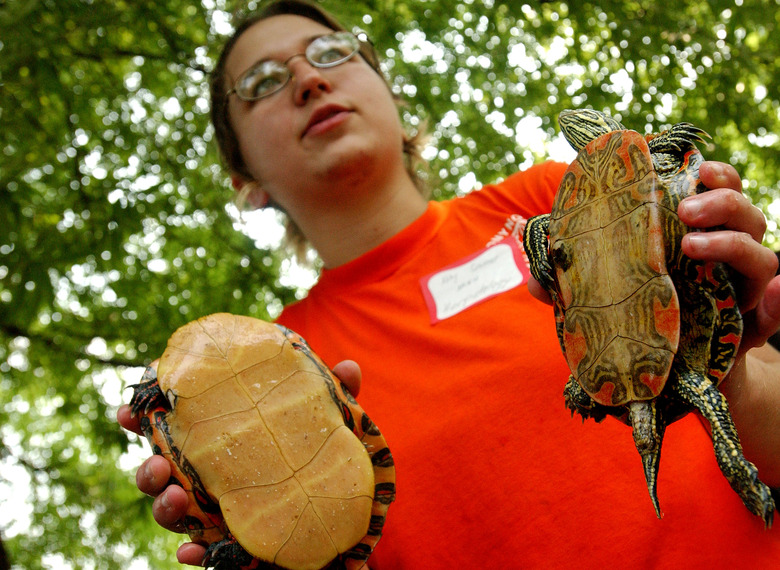Tools Used By A Herpetologist
A herpetologist–a scientist who studies amphibians and reptiles–encounters many interesting and potentially dangerous animals. There are many tools a herpetologist can use to handle, observe and assist amphibians and reptiles.
Snake hook
A herpetologist can use a snake hook to safely pick up snakes. This hook is specially designed with a shaft that's anywhere from 1-4 feet long and a hook on the end. If a snake is venomous or acting aggressively, a herpetologist will use a snake hook to gently pick up the snake in the middle of the body.
Antivenom
Herpetologists may encounter venomous snakes that could potentially inject deathly venom with a single bite. If a herpetologist knows she will be working with a particular type of venomous snake, she will typically keep antivenom available. If the herpetologist is bitten, the antivenom can be injected into the blood system to counteract the venom.
Gloves
Gloves are also important protective gear for herpetologists. Sturdy gloves will protect against bites by a lizard or snake. Additionally, latex gloves will protect a frog or salamander from absorbing chemicals through its skin that might be present on the herpetologist's hands.
Goggles
Some reptiles or amphibians have the ability to spit venom or other harmful substances toward the eyes of another animal, and the chemicals can injure a herpetologist. Goggles or a facemask can be worn for protection.
Scale
Herpetology isn't all about dealing with dangerous animals. It is often important for a herpetologist to measure the weight of a reptile or amphibian. These animals can be weighed on a scale to gauge their rate of growth and evaluate the animal's health.
Cite This Article
MLA
Hershey, Arlen. "Tools Used By A Herpetologist" sciencing.com, https://www.sciencing.com/tools-used-herpetologist-5761177/. 24 April 2017.
APA
Hershey, Arlen. (2017, April 24). Tools Used By A Herpetologist. sciencing.com. Retrieved from https://www.sciencing.com/tools-used-herpetologist-5761177/
Chicago
Hershey, Arlen. Tools Used By A Herpetologist last modified March 24, 2022. https://www.sciencing.com/tools-used-herpetologist-5761177/
